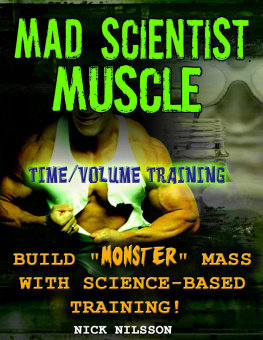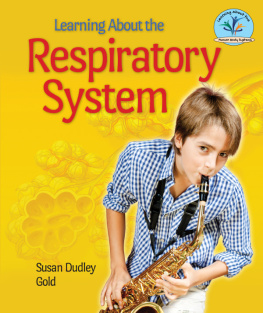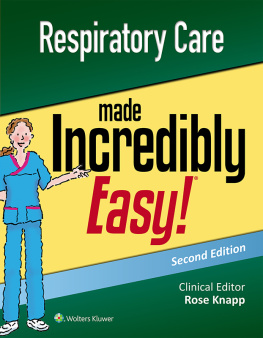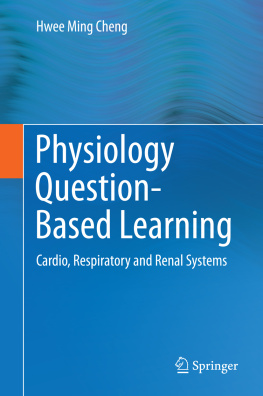Alison McConnell PhD FACSM FBASES - Respiratory Muscle Training: Theory and Practice, 1e
Here you can read online Alison McConnell PhD FACSM FBASES - Respiratory Muscle Training: Theory and Practice, 1e full text of the book (entire story) in english for free. Download pdf and epub, get meaning, cover and reviews about this ebook. year: 2013, publisher: Churchill Livingstone, genre: Science. Description of the work, (preface) as well as reviews are available. Best literature library LitArk.com created for fans of good reading and offers a wide selection of genres:
Romance novel
Science fiction
Adventure
Detective
Science
History
Home and family
Prose
Art
Politics
Computer
Non-fiction
Religion
Business
Children
Humor
Choose a favorite category and find really read worthwhile books. Enjoy immersion in the world of imagination, feel the emotions of the characters or learn something new for yourself, make an fascinating discovery.

- Book:Respiratory Muscle Training: Theory and Practice, 1e
- Author:
- Publisher:Churchill Livingstone
- Genre:
- Year:2013
- Rating:5 / 5
- Favourites:Add to favourites
- Your mark:
Respiratory Muscle Training: Theory and Practice, 1e: summary, description and annotation
We offer to read an annotation, description, summary or preface (depends on what the author of the book "Respiratory Muscle Training: Theory and Practice, 1e" wrote himself). If you haven't found the necessary information about the book — write in the comments, we will try to find it.
Respiratory Muscle Training: theory and practice is the worlds first book to provide an everything-you-need-to-know guide to respiratory muscle training (RMT). Authored by an internationally-acclaimed expert, it is an evidence-based resource, built upon current scientific knowledge, as well as experience at the cutting-edge of respiratory training in a wide range of settings. The aim of the book is to give readers: 1) an introduction to respiratory physiology and exercise physiology, as well as training theory; 2) an understanding of how disease affects the respiratory muscles and the mechanics of breathing; 3) an insight into the disease-specific, evidence-based benefits of RMT; 4) advice on the application of RMT as a standalone treatment, and as part of a rehabilitation programme; and finally, 5) guidance on the application of functional training techniques to RMT.
The book is divided into two parts - theory and practice. Part I provides readers with access to the theoretical building blocks that support practice. It explores the evidence base for RMT as well as the different methods of training respiratory muscles and their respective efficacy. Part II guides the reader through the practical implementation of the most widely validated form of RMT, namely inspiratory muscle resistance training. Finally, over 150 Functional RMT exercises are described, which incorporate a stability and/or postural challenge - and address specific movements that provoke dyspnoea.
Respiratory Muscle Training: theory and practice is supported by a dedicated website (www.physiobreathe.com), which provides access to the latest information on RMT, as well as video clips of all exercises described in the book. Purchasers will also receive a three-month free trial of the Physiotec software platform (via www.physiotec.ca), which allows clinicians to create bespoke training programmes (including video clips) that can be printed or emailed to patients.
- Introductory overviews of respiratory and exercise physiology, as well as training theory
- Comprehensive, up-to-date review of respiratory muscle function, breathing mechanics and RMT
- Analysis of the interaction between disease and respiratory mechanics, as well as their independent and combined influence upon exercise tolerance
- Analysis of the rationale and application of RMT to over 20 clinical conditions, e.g., COPD, heart failure, obesity, mechanical ventilation
- Evidence-based guidance on the implementation of inspiratory muscle resistance training
- Over 150 functional exercises that incorporate a breathing challenge
- www.physiobreathe.com - access up-to-date information, video clips of exercises and a three-month free trial of Physiotecs RMT exercise module (via www.physiotec.ca)
Alison McConnell PhD FACSM FBASES: author's other books
Who wrote Respiratory Muscle Training: Theory and Practice, 1e? Find out the surname, the name of the author of the book and a list of all author's works by series.












